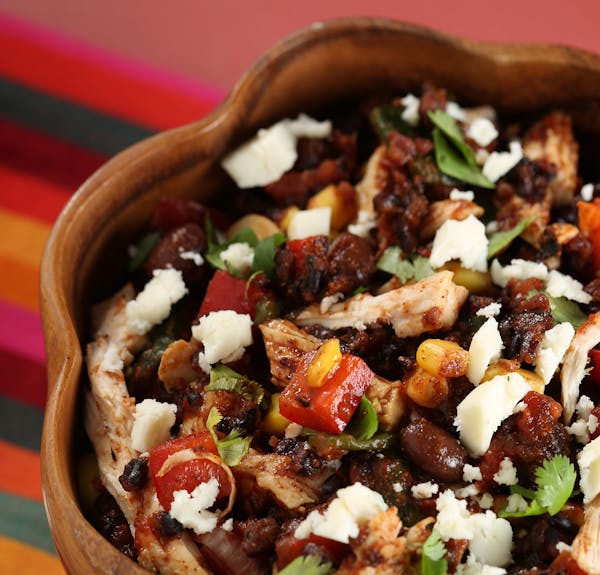I have friends and family who eat out almost every meal. I just can't do it — I enjoy cooking, but mostly I covet control of my food dollars and my nourishment. For most weeknight dinners and lunches, I rely on a well-stocked pantry. Fortunately, today's supermarkets offer such wide varieties of staples that it's simple to keep inspiring options on hand.
I have two shelves devoted to whole grains, rices, lentils and dry beans. These relatively inexpensive building blocks generate dozens of highly nutritious options full of lean protein and fiber. What's more, they can be served as a meatless meal, especially during Lent.
In less than 20 minutes, I can cook organic freekeh (cracked roasted green wheat) or imported roasted buckwheat groats into pots of nutty flavor ready for a sprinkle of herbs and a dash of oil. Quinoa and bulgur prove even faster.
My stash of heirloom dried beans from Rancho Gordo (ranchogordo.com) practically begs to be cooked. I happily oblige, to the benefit of weekday salads and Friday night bean dip.
New to my pantry: Farro, an ancient grain of the wheat family that's in vogue at many restaurants for its toothsome texture and versatile nutty flavor. I like Italian pearled farro (the outer husk has been removed) because it cooks to plump kernels in about 15 minutes.
On the weekends, I'll simmer long-cooking brown and wild rice, dried beans and wheat berries for weekday convenience. A pinch of salt in the cooking water always enhances the final flavor. For an easy, transportable salad, season 2 cups of warm cooked grains or beans (or a combination) with a couple of tablespoons of your favorite vinaigrette, then pile over salad greens.
In general, cooked beans and grains keep at least a week in the refrigerator; most freeze fine. To retain their toothsome texture, I drain the grains or beans and then lay them out on a baking sheet for rapid cooling.
Canned beans often save the day. But when I take the time to cook dried beans, the flavor and textural differences prove astounding. All you need is a saucepan, water and 2 hours of largely unattended cooking to upgrade this inexpensive protein powerhouse. No need to soak beans; in fact, you'll retain color and flavor if you skip soaking.
Here's my favorite basic cooked beans method: Put 2 cups dried (rinsed) beans in a large saucepan. Add 2 quarts water and 2 tablespoons olive oil (or bacon fat). Cook over low heat, stirring often, until beans are nearly tender, about 1 ½ hours. Stir in 1 teaspoon salt and simmer until fully tender, another 10 to 20 minutes. Cool.
I love to turn grains and beans into main-course "bowls." One here is inspired by tacos and based on black beans and black rice. The other pairs farro with sausage and broccoli rabe. Either can be adapted for Lent or other vegetarian meals, since the meat is not essential to their success.
View these recipes as starting points — change the grain, change the vegetable, add cheese, omit the chicken or sausage. You get it. Then stay in and enjoy dinner at home.
